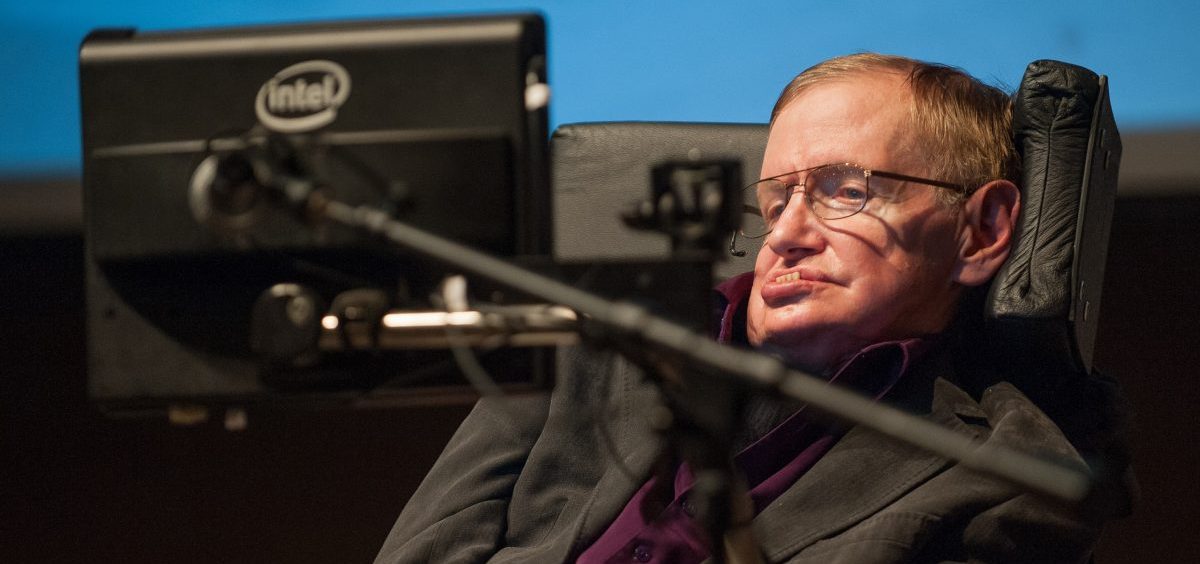News

Stephen Hawking, Who Awed Both Scientists And The Public, Dies
By: Joe Palca | NPR
Posted on:
There aren’t very many scientists who achieved rock star status. Stephen Hawking, who has died at the age of 76, family members told British media early Wednesday, was definitely a contender.
“He was a great scientist and an extraordinary man whose work and legacy will live on for many years,” the family statement said, according to The Guardian. “His courage and persistence with his brilliance and humour inspired people across the world. He once said, ‘It would not be much of a universe if it wasn’t home to the people you love.’ We will miss him for ever.”
Hawking was probably the best-known scientist in the world. He was a theoretical physicist whose early work on black holes transformed how scientists think about the nature of the universe.
But his fame wasn’t just a result of his research. Hawking, who had a debilitating neurological disease that made it impossible for him to move his limbs or speak, was also a popular public figure and best-selling author. There was even a biopic about his life, The Theory of Everything, that won an Oscar for the actor, Eddie Redmayne, who portrayed Hawking.
Wide appeal and a sense of humor
When he came to scientific conferences, the audience hung on every word. And it wasn’t just the scientists who stood in awe: The general public flocked to him as well. His popular book about his work was a best-seller.
“He agreed that that book, A Brief History of Time, was probably the least-read, most-bought book ever,” says Leonard Mlodinow, a physicist and science writer at the California Institute of Technology. Mlodinow collaborated with Hawking on a less technical version of Hawking’s first book, called A Briefer History of Time.
That title hints at what Mlodinow says was a central part of his character — Hawking’s sense of humor.
“As hard as it was for him to communicate, he would sit there sometimes, and would take five or six minutes to be typing something out,” Mlodinow says. “And then when he hit speak, and his system voices his words, it would be a joke.”
That sense of humor, along with his fame, allowed Hawking to land some pretty unusual gigs for a physicist. He appeared on The Simpsons several times — as well as on a number of other popular shows, including Futurama and Star Trek, The Next Generation.
In one episode of The Simpsons, Hawking showed a willingness to poke fun at himself — and, in a way, the entire culture of science.
“Your theory of a doughnut-shaped universe is intriguing, Homer,” Hawking tells Homer Simpson. “I may have to steal it.”
Changing our understanding of physics
So what did this man who re-envisioned the universe really do? What was his science all about?
Lawrence Krauss, a theoretical physicist who is on leave from Arizona State University and was a friend and colleague of Hawking’s, says that at a young age, Hawking discovered something “truly remarkable.”
Krauss says before Hawking, physicists thought that the immense gravity of a black hole would draw everything in and nothing could escape. But by combining quantum mechanics and the theory of relativity, Hawking showed something astonishing: That theoretically, at least, some kind of particle had to defy what physicists classically expected from gravity, and radiate out of black holes.
“That radiation is now called Hawking radiation,” Krauss told NPR in 2012. “And it changed everything about the way we think about gravity.”
Krauss says Hawking pointed out a fundamental problem with the way physicists understand our world — a problem that Krauss says has yet to be resolved.
“And therefore,” Krauss says, “his influence and his legacy is quite profound.”
Toward the end of his life, Hawking’s disease left him virtually paralyzed. It took an enormous effort for Hawking to communicate, using the tiny movements he could make to control a computer interface. It’s tempting to say that Hawking achieved his fame in spite of his physical challenges.
But in a way, Hawking’s physical challenges may have contributed to his mental prowess, says Kip Thorne, a physicist at the California Institute of Technology who frequently collaborated with Hawking.
“It was because of this handicap that he developed new ways of thinking,” Thorne says, “new ways of wrapping his brain around things that enabled him to out-think anybody else in the field.”
And he out-thought people with great regularity.
Free from gravity
Throughout his life, Hawking was up for a challenge. For example, in 2007, he accepted an offer from Zero G Corporation to experience weightlessness. The company uses a plane that climbs and then dives in such a way that for 25 seconds at a time, everyone inside the plane is weightless.
At a news conference before his flight, Hawking said, “I have been wheelchair-bound for almost four decades, and the chance to float in zero-G will be wonderful.”
Pictures taken during the flight show what appears to be a very happy physicist floating, chair-free, around the plane’s cabin.
Fitting, really, for the scientist who changed the way we think of gravity to spend a few minutes of his life without it.
9(MDI4ODU1ODA1MDE0ODA3MTMyMDY2MTJiNQ000))

